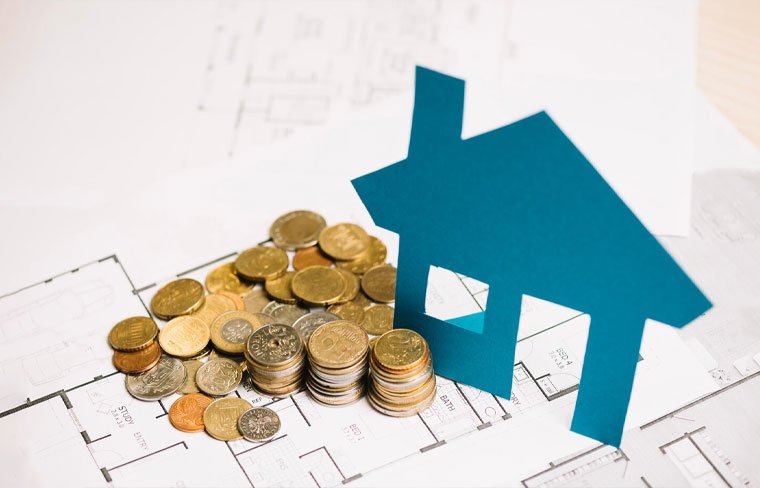
Did you know that house flipping can offer significant profits if done correctly? Last year, approximately 6% of all home sales were flipped, generating an average gross profit of $70,000 per property!
As of 2023, the housing market has witnessed a surge in property prices, with the median home value in the United States reaching $327,300, an impressive 10.7% increase from 2022. This presents an intriguing opportunity for those considering house flipping as a potential business venture. But is it still a profitable endeavor in this dynamic market? The answer is a resounding yes! House flipping can be an incredibly lucrative business, with potential profits ranging from modest to substantial. However, it is not without its risks and challenges.
In this comprehensive guide, we will delve into the intricacies of house flipping, exploring the steps to success, common pitfalls to avoid, and advanced strategies to maximize profits. By the end, readers will be equipped with the knowledge and confidence to embark on their house-flipping journeys.
With a strategic approach and a thorough understanding of the process, house flipping can be an incredibly profitable venture. By navigating the potential pitfalls and implementing effective strategies, investors can successfully renovate and sell properties for a healthy profit, contributing to their financial success and a thriving real estate market.
Overview
House flipping has gained popularity as a real estate investment strategy, and it involves purchasing a property, often in need of renovation or repair, to quickly resell it for a profit. This process requires a keen eye for potential, a strategic approach to renovations, and a deep understanding of the local real estate market. While it may seem like a simple concept, numerous factors can make or break a successful house flip.
The profit potential is a major allure of this venture. In 2022, house flippers achieved an average gross profit of $70,000 per flip, highlighting the monetary rewards that can be reaped. However, it is crucial to recognize the risks involved, including unexpected costs, market fluctuations, and potential delays. By understanding these challenges and implementing careful planning, investors can enhance their chances of success.
Understanding the House Flipping Process
A. Finding and Acquiring the Property
The first step in the house-flipping journey is locating and acquiring a suitable property. This requires thorough research and due diligence. Investors should analyze market trends, identify target neighborhoods, and scrutinize comparable sales data to ensure they are purchasing a property with a strong profit potential.
Once a promising property is identified, it is crucial to conduct a comprehensive inspection to assess the extent of repairs and renovations needed. This includes examining the structural integrity, plumbing, electrical systems, and overall condition of the building. Negotiating a favorable purchase price is also key, and investors should be prepared to walk away if the numbers don’t align with their profit margins.
B. Financing Options
Securing financing is a critical aspect of the house-flipping process. There are several options available to investors, each with its advantages and considerations. These include:
- Loans: Investors can obtain short-term loans specifically designed for house flipping. Hard money loans, offered by private lenders, are commonly used due to their faster approval process and flexibility regarding credit scores. Traditional mortgage loans are another option but may involve stricter requirements and longer processing times.
- Investors: Forming partnerships or seeking out investors can provide the necessary capital for a flip. This approach often involves sharing profits but can reduce the financial burden on the flipper.
- Personal Funds: Utilizing personal savings or home equity lines of credit can be a viable option for those with sufficient funds. This eliminates the need for loan interest and provides greater autonomy in decision-making.
C. Renovation and Rehabilitation
The renovation phase is where the transformation occurs, and it involves more than just cosmetic upgrades. Successful flippers create a detailed plan and budget, ensuring that essential repairs are addressed and that the renovated property appeals to the target market. This may include structural changes, modernizing outdated features, and enhancing curb appeal. Executing the renovation plan efficiently and effectively is crucial to staying on budget and timeline.
Key Steps for a Successful House Flip
A. Conducting Market Research and Analysis
Comprehensive market research is the cornerstone of a successful house flip. Investors should study the local real estate market, including supply and demand dynamics, recent sales data, and price trends. This information helps determine the property’s potential value after renovations, enabling investors to set realistic profit margins and resale prices. Analyzing the competition and understanding the target buyer demographic are also crucial aspects of this research.
B. Setting a Realistic Budget and Timeline
Creating a detailed budget and establishing a realistic timeline are critical steps in the house-flipping process. Investors should account for all expenses, including purchase and renovation costs, holding costs (such as utilities and property taxes during the renovation), and closing costs associated with the resale. Unexpected expenses should also be factored in to avoid financial strain.
Setting a realistic timeline is equally important. Delays can impact holding costs and overall profitability. Investors should allow for contingencies and be mindful of potential setbacks, especially when dealing with extensive renovations or permitting processes.
C. Assembling a Team
Building a reliable team of professionals is vital to a successful house flip. This includes contractors, designers, and realtors who have experience in the field and can provide valuable insights and expertise.
- Contractors: Selecting a skilled and trustworthy contractor is essential. Investors should seek referrals, review previous work, and obtain multiple quotes to ensure a good fit. Clear communication and a detailed scope of work are key to a successful collaboration.
- Designers: Engaging the services of a designer can enhance the overall appeal of the renovated property. Designers bring a creative eye and can assist in making strategic choices that resonate with buyers.
- Realtors: Partnering with a knowledgeable realtor can provide valuable insights into the local market. They can assist in setting a competitive resale price, marketing the property effectively, and navigating the legal aspects of the transaction.
D. Executing an Effective Renovation Plan
The renovation phase is where the vision comes to life. It involves more than just cosmetic updates; it’s about creating a functional and appealing space that caters to the target buyer. Successful flippers often focus on high-impact areas, such as kitchens and bathrooms, which can significantly influence a buyer’s perception and offer a strong return on investment.
It is crucial to maintain a balance between quality and cost. While it’s important to create a desirable space, overspending on high-end finishes can eat into profit margins. Strategic choices, such as opting for cost-effective alternatives or focusing on key areas, can help maximize returns.
E. Pricing and Marketing the Property for Sale
Setting the right resale price is critical to ensuring a quick sale and maximizing profits. Investors should analyze comparable sales data and consider the renovations made to determine a competitive asking price. Overpricing the property can lead to prolonged listing periods, while underpricing may result in leaving money on the table.
Marketing the property effectively is also key. This includes utilizing professional photography, creating compelling listings, and leveraging multiple marketing channels to reach a wider audience. Showcasing the property’s best features and highlighting any unique attributes can help generate interest and attract potential buyers.
Common Mistakes to Avoid
A. Research and Planning
One of the most common pitfalls in house flipping is a lack of thorough research and planning. Investors may underestimate the time and effort required to successfully flip a property, leading to costly mistakes. Conducting due diligence, analyzing market data, and creating detailed budgets and timelines are essential to mitigating risks and ensuring a profitable outcome.
B. Profits and Underestimating Costs
Inexperienced flippers may fall into the trap of overestimating potential profits and underestimating the true costs involved. It’s important to be conservative in profit estimates and to account for unexpected expenses. This includes contingency funds to cover unforeseen issues, such as hidden structural problems or repairs needed due to contractor errors.
C. Poor Communication and Project Management
Effective communication and project management are critical to a successful house flip. Miscommunication between investors, contractors, and other team members can lead to delays, overspending, and subpar results. Establishing clear lines of communication, setting expectations, and regularly reviewing progress are essential to keeping the project on track.
D. Marketing and Pricing Strategies
Failing to implement effective marketing and pricing strategies can result in reduced profits or prolonged listing periods. Investors should avoid the temptation to cut corners when it comes to marketing, as it plays a crucial role in attracting buyers and generating interest. Additionally, setting an unrealistic resale price, whether too high or too low, can hinder a successful sale.
Advanced House Flipping Strategies
A. Exploiting Undervalued Properties
Successful house flippers often have a keen eye for identifying undervalued properties with strong profit potential. This may involve targeting properties in up-and-coming neighborhoods, seeking out distressed sales or foreclosures, or recognizing properties with cosmetic issues that can be easily rectified. Utilizing data analytics and market trends can provide insights into areas with high potential for growth and appreciation.
B. Data Analytics and Market Trends
Leveraging data analytics and market trends can give flippers a competitive edge. Analyzing historical sales data, tracking price movements, and understanding buyer preferences enable investors to make informed decisions about property selections and renovations. This includes identifying which features and upgrades have the highest return on investment, allowing for strategic planning and budgeting.
C. Cost-Saving Renovation Techniques
While it’s important to create appealing spaces, cost-saving measures can help maximize profits. This may involve opting for cost-effective materials that still offer quality and durability or focusing renovations on areas with the highest impact on resale value. Establishing relationships with suppliers and contractors can also lead to discounts and preferential rates.
D. Tax Benefits and Legal Loopholes
Understanding the tax implications and legal considerations of house flipping can provide opportunities for optimization. Investors should familiarize themselves with applicable tax laws, such as capital gains taxes and deductions for expenses. Working with a qualified accountant or tax advisor can help ensure compliance and identify potential benefits, such as tax breaks or write-offs.
Conclusion
House flipping can be a lucrative and exciting venture when approached with the right knowledge and strategies. By understanding the process, conducting thorough research, and assembling a reliable team, investors can successfully navigate the potential pitfalls and maximize their chances of profit.
While there are risks and challenges, the potential rewards are significant. With careful planning, strategic renovations, and effective marketing, investors can achieve success in the house-flipping business and contribute to the vibrant real estate landscape. By applying the insights gained from this guide, readers can confidently embark on their house-flipping journeys, creating profitable ventures and achieving their financial goals.





